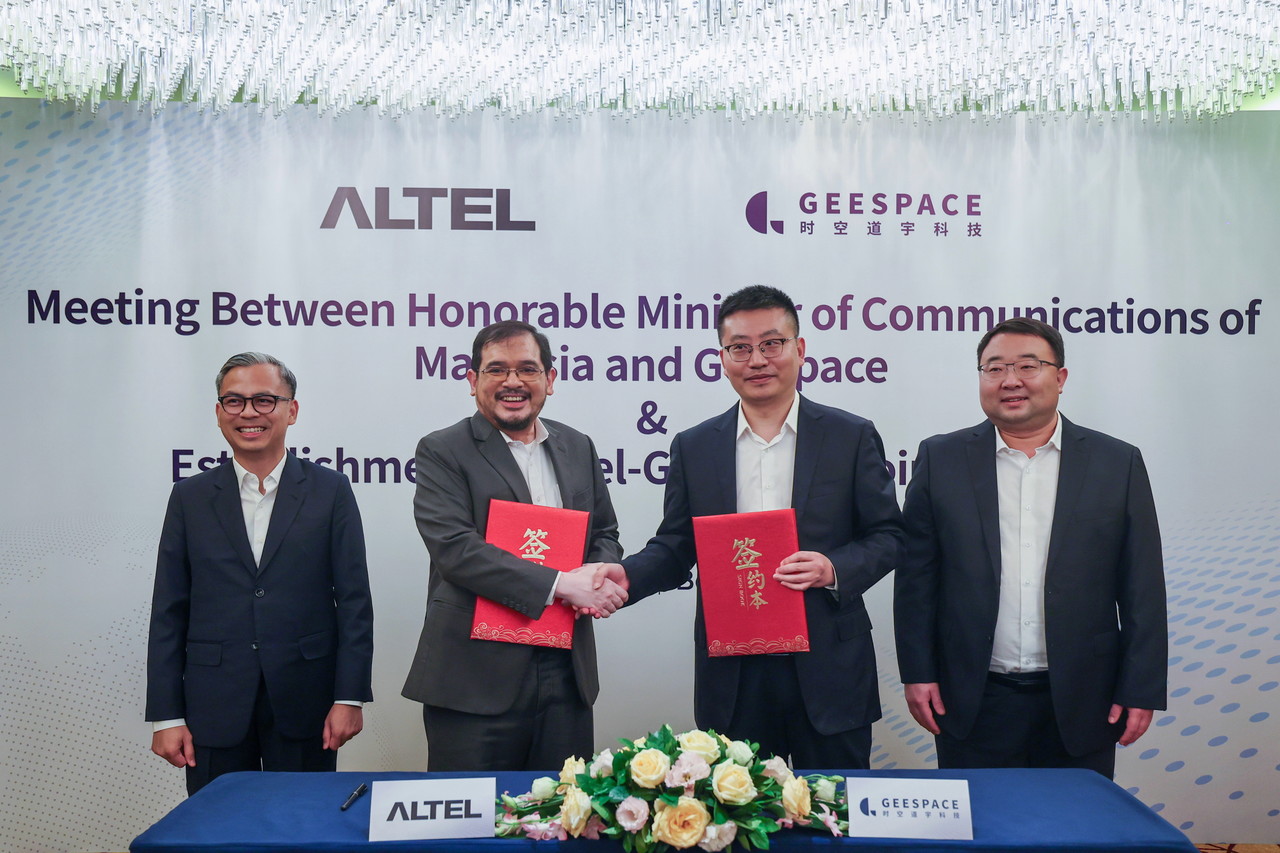BEIJING – The establishment of the first study and research centre and the centre of excellence in Malaysia in the field of satellite telecommunications can help the government’s efforts to expand the use of direct-to-cell technology through low earth orbit (LEO) satellites.
Communications Minister Fahmi Fadzil said that the centre, which will be developed by Chinese satellite technology company Geespace and telecommunications company Altel, can be a platform for more studies to be conducted to see the suitability of using the technology.
He said direct-to-cell technology was seen as important because it was able to help solve connectivity problems in remote places, including those at national borders or fishermen in the sea to get internet coverage.
“This R&D centre and centre of excellence will give more Malaysians the opportunity to get involved in this field because there is no denying that this is an exciting new field that can generate income for our country.
“My hope is that with the existence of a centre of excellence, we will be able to improve the quality and the amount of research that can be applied to products that can be commercialised specifically in the field of satellite technology and further give us the economic impact,” he said.
He told Bernama after witnessing the signing ceremony of the joint venture agreement between Geespace represented by chief technology officer Edison Ding and Altel represented by Altel Group Sdn Bhd acting chief executive officer Mohamad Helmi Harith.
Direct-to-cell technology allows phones to receive telecommunication signals emitted by LEO satellites without any additional hardware. LEO satellites, which operate at an altitude of 300-2,000km above the earth’s surface, are cheaper and provide more efficient signal transmission.
Fahmi said he has also asked the Malaysian Communications and Multimedia Commission (MCMC) to examine aspects of the application submitted by the company in introducing the technology.
“I have asked MCMC to look into aspects of the application and I have asked RTM to see if it is suitable to broadcast programmes or documentaries on this technology as well as new technologies called emergence technology,” he said.
He said Altel and Geespace are also understood to be working on a proof of concept by the second quarter of 2025 for LEO satellite IoT, High Precision Positioning and direct-to-cell technology which is hoped to be able to benefit Malaysians.
Previously, Fahmi said the ministry was researching the use of satellite technology as a telecommunication tower in an effort to improve the communication system in this country, thereby enabling the policy of “where there is a road, there is internet” to be achieved and implemented properly.
Fahmi is currently on a three-day working visit to China starting Thursday and is scheduled to depart for Korea tomorrow to participate in GSMA Mobile 360 Apac and deliver a keynote speech in “Building the AI-Enabled Digital Backbone” session. – September 28, 2024

